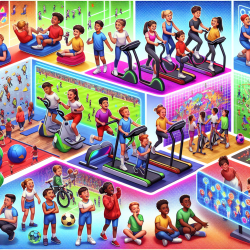Improving outcomes for children with dyslexia is a goal shared by many speech-language pathologists. A recent study titled "Improvements in Spelling after QEEG-based Neurofeedback in Dyslexia: A Randomized Controlled Treatment Study" provides compelling evidence on the efficacy of QEEG-based neurofeedback in enhancing spelling skills among dyslexic children. This blog will explore the key findings of this study and offer practical recommendations for practitioners to integrate these insights into their therapeutic practices.
Understanding QEEG-Based Neurofeedback
Quantitative Electroencephalography (QEEG) is a brain imaging technique that measures electrical activity in the brain. Neurofeedback, on the other hand, is a therapeutic intervention that uses real-time displays of brain activity to teach self-regulation of brain function. The study conducted by Breteler et al. (2009) demonstrates that QEEG-based neurofeedback can significantly improve spelling abilities in children with dyslexia.
Key Findings from the Study
The study involved 19 children diagnosed with dyslexia, who were randomized into an experimental group receiving QEEG-based neurofeedback and a control group receiving remedial teaching. The main findings were:
- The experimental group showed a substantial improvement in spelling (Cohen’s d = 3), while no significant improvement was found in reading abilities.
- Significant increases in alpha coherence were observed, indicating that attentional processes might account for the improvement in spelling.
- No significant changes were noted in the fronto-central areas, aligning with the lack of improvement in reading skills.
Implications for Practice
Based on these findings, practitioners can consider the following steps to incorporate QEEG-based neurofeedback into their therapeutic interventions:
- Target Spelling Interventions: Given the significant improvement in spelling, focus neurofeedback sessions on enhancing spelling skills. Utilize specific protocols that address the individual neurophysiological patterns of each child.
- Monitor Alpha Coherence: Track changes in alpha coherence as a potential marker for spelling improvement. This can help in fine-tuning the neurofeedback protocols for better outcomes.
- Integrate with Traditional Methods: Combine neurofeedback with traditional remedial teaching methods to maximize the benefits. The study suggests that a holistic approach can yield better results.
- Personalize Treatment: Develop personalized neurofeedback protocols based on individual QEEG assessments. This ensures that the interventions are tailored to the specific needs of each child.
Encouraging Further Research
While the study provides promising results, it also highlights the need for further research. Practitioners are encouraged to:
- Conduct larger-scale studies to validate the findings and explore the long-term effects of QEEG-based neurofeedback on dyslexia.
- Investigate the potential benefits of neurofeedback on other aspects of dyslexia, such as reading comprehension and fluency.
- Explore the impact of different neurofeedback protocols on various subtypes of dyslexia to refine and optimize treatment approaches.
Conclusion
QEEG-based neurofeedback offers a promising avenue for improving spelling skills in children with dyslexia. By integrating these insights into practice, speech-language pathologists can enhance their therapeutic interventions and contribute to better outcomes for children with dyslexia. To read the original research paper, please follow this link:
Improvements in Spelling after QEEG-based Neurofeedback in Dyslexia: A Randomized Controlled Treatment Study.










